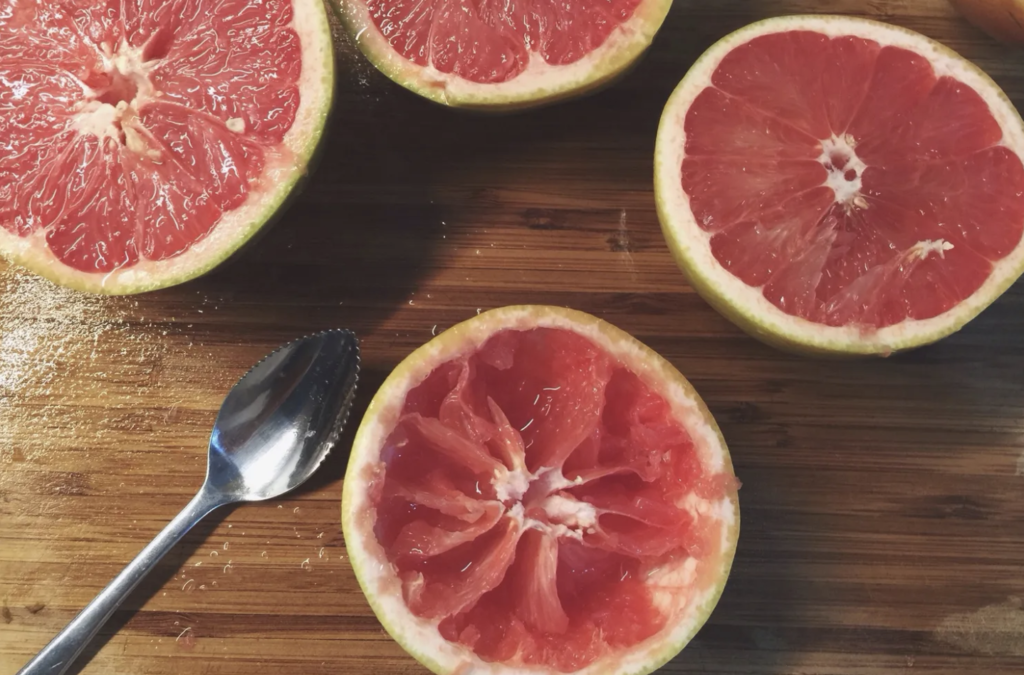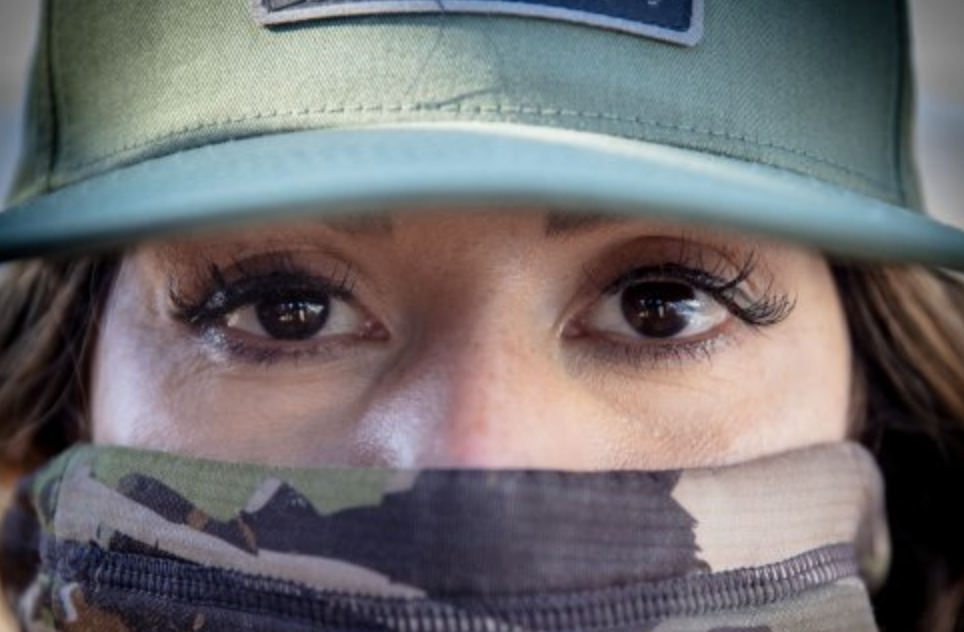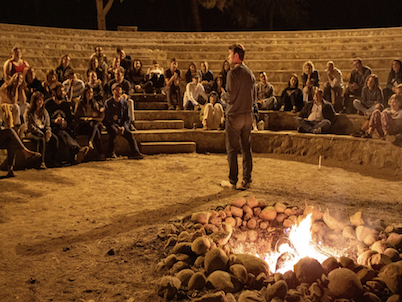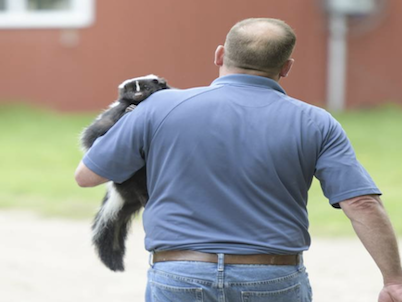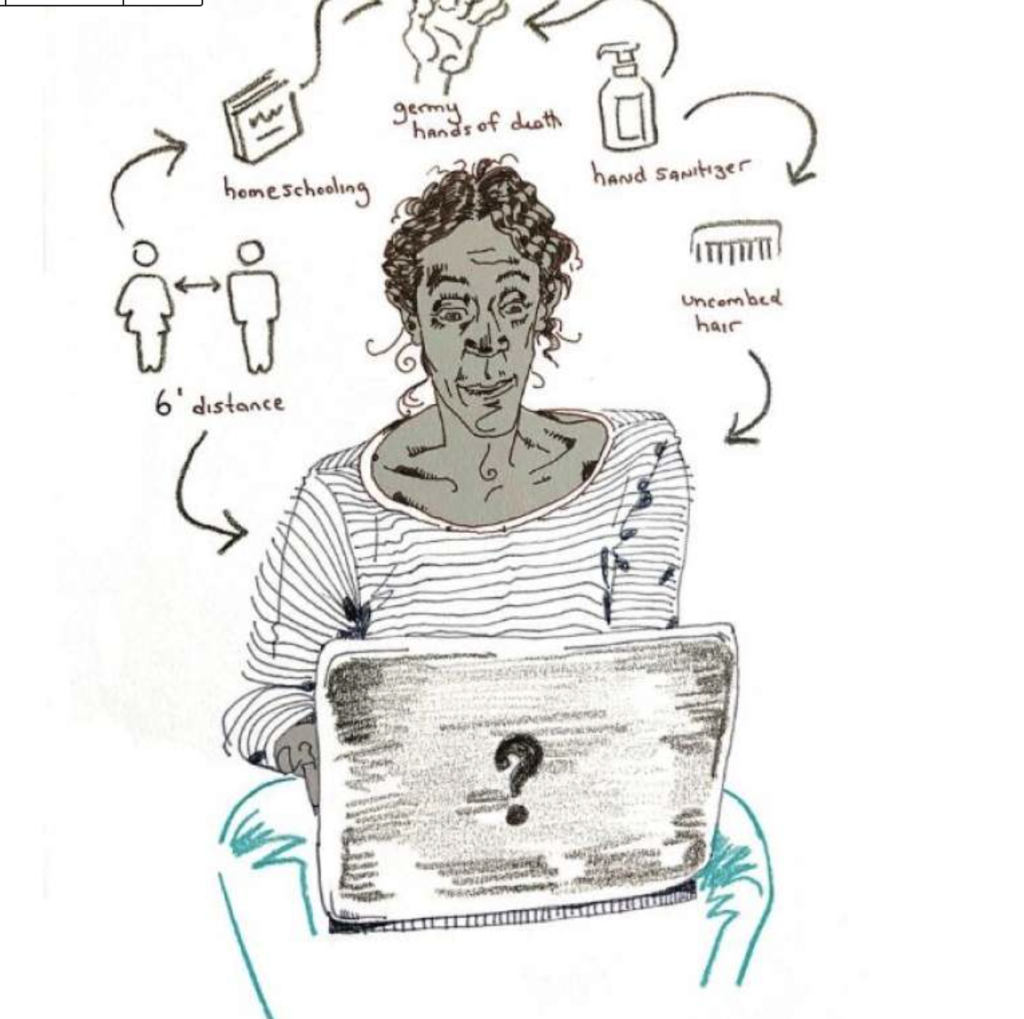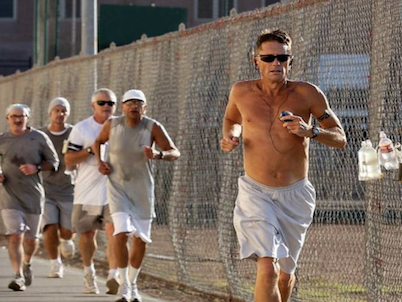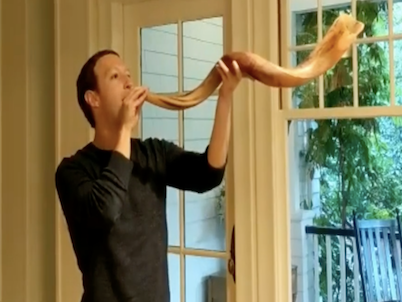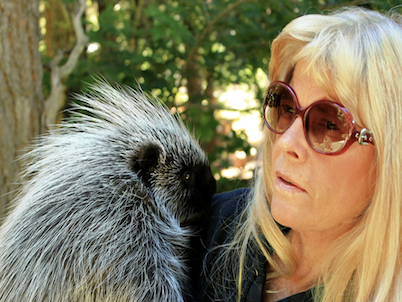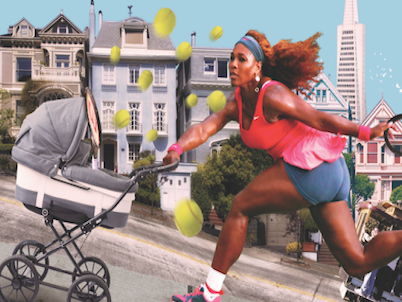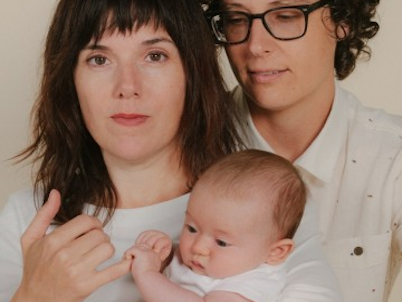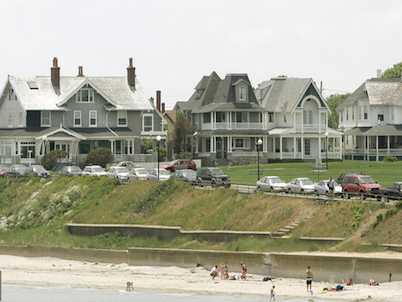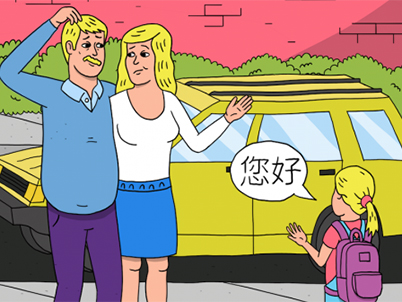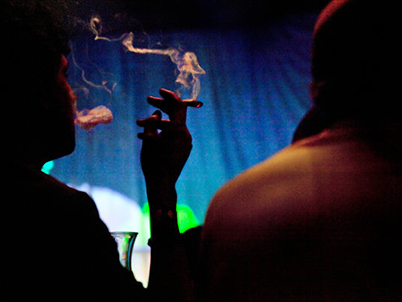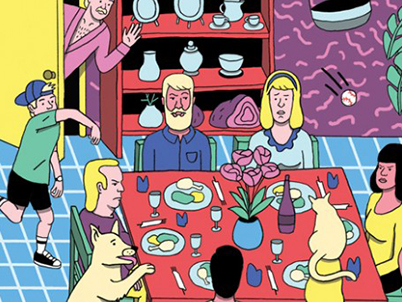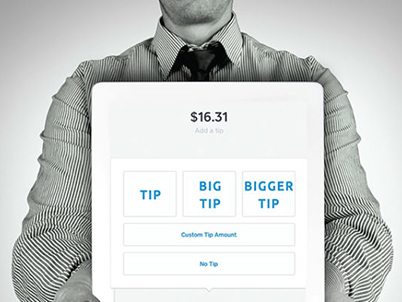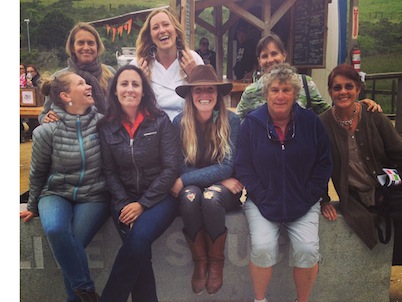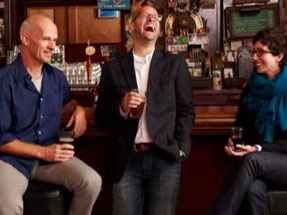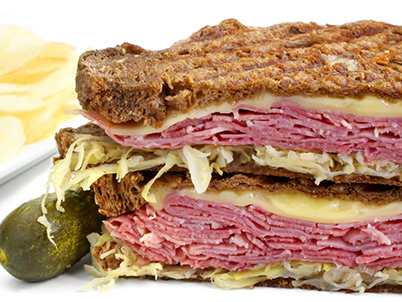I Eat Meat. Why Was Killing My Own So Hard?
This night is different from other nights. Last week I was huddled in a foggy parklet listening to triple-vaxxed friends crow about cryptocurrency over wisps of hamachi crudo. Tonight I’m sitting fireside beneath a heavily bearded bison, digging daggers into a feast of wild game, and dinner conversation is…wild.
Topics include favorite methods for excavating ungulate innards and the joys of canning raw bear meat. One woman explains how she strategically stashes firearms in case of a home intrusion. Another asks: “Who is Fauci?”
Our host, Jen Judge, poses a question. “Where’s the best place to shoot an elk?” “In the heart and lungs!” someone cheers. Yes, but no. “As close to the road as possible,” she says, smiling. It’s an inside-hunting joke I don’t quite get, yet.
I was already having second thoughts. Now I’m having third thoughts. Dramatic thoughts. Coen Brothers–esque thoughts. I’m here to kill. Why?
Not like I’ve killed ants crawling on my kitchen counter. Or any plant I’ve ever owned. Not even like, oh, nooo, the raccoon I just didn’t see that one dark night.
But I was here now, at Vermejo, a New Mexico eco-reserve half the size of the Grand Canyon, where Ted Turner’s deer and antelope roam. The 83-year-old billionaire CNN founder and conservationist has long lived by his own motto: “Save Everything.” He has dedicated the last three decades to restoring wildlife and, in turn, this land it lives on. Managing populations of bison, cutthroat trout, and a herd of 7,000 elk that includes some 4,000 females (a.k.a. cow elk), which is what we’re hunting. No antlers, trim beige coats, bottomless brown eyes, and puffy white butts so cute and bouncy they belong in a Charmin commercial.
So cute, so alive, I’m not sure I—an urban-dwelling, gun-shunning omnivore who can’t pull her own kid’s loose tooth (gross)—will be able to do what I came to do: pull a trigger, and then do every unappetizing thing it actually takes to eat a steak for dinner. Perhaps a hideous wild boar or a wee bird would’ve been easier?
This was not a vacation but a new forest-to-table workshop aimed at women who know little to nothing about hunting—nor possess the things required to try it, other than an open mind, a tough stomach, and deep pockets. Access to these 550,000 pristine acres isn’t cheap, especially since it comes with perks a bare-bones hunt on public land does not: comfy beds and hot showers, safety courses and expert guides, butchering demos, three chef-y meals a day. Every confounding detail (licenses, tags, firearms, ammunition, rubber gloves) prearranged. And if all goes well, more than a year’s worth of the most sustainable meat a family could eat.
Hunting on private land is akin to having CLEAR at the airport. It makes things a little easier, a lot less crowded, complete with someone to guide you through the maze. It also makes you feel like a prick.
Still, an opportunity like this transforms hunting into something it otherwise isn’t—not really—for someone without a tether to the tradition: Doable. Safe. Supportive. Lacking the machismo that women who hunt with men (which is most women who hunt) say they often encounter.
It makes it possible to breeze into northern New Mexico, ignorant and inexperienced, and leave six days later a new woman in a way, with purple elk steaks in her carry-on.
“Lots of people hunt,” shrugged my friend Chris, who doesn’t, before I left. He’s right. Lots of people hunt and have, of course, since the cave days. Although since the rise of the industrial meatpacking industry, not to mention DoorDash, let’s be honest, not that many.
The number of hunters in America has declined steadily over the decades, from 17 million in the 1980s to around 11.5 million today. The pandemic, however, gave hunting a boost. Like birding and biking, hiking and camping, COVID life led to a newfound appreciation for all there is to do outdoors. Pickleball, pig hunting, same-same?
A whopping 80% of Americans say they approve of hunting yet only 4% do it. California, where I live, issued 300,000 hunting licenses in 2020, a 9% increase over 2019. But that’s still less than 1% of its population.
That 1% did not include me. I was raised in suburban Boston. My father ran video arcades. My mother cooked Steak-umms. Somehow I grew up to be a fleeting San Francisco restaurant critic who finds hiking fun and enjoys gardening, as in picking lettuce at a farm-y Airbnb. Other pastimes include graciously accepting fresh-caught salmon and foraged porcini from friends and having nothing to offer in return. I even wrote a book about how to avoid wildlife encounters—which is the opposite of stalking them. Self-sufficiency isn’t my thing. Anxiety is.
To me, people who hunt have always been Other People. Hardier people. Rural people. Sturdy Midwesterners and genteel Southern people. British queens and their tweed-knickers-clad people. A certain breed of chef people. Increasingly, in the United States, hunting has attracted more women and people of color—but still, stereotypically, statistically, white, right, aging-male people are the majority.
Of course, I’m hardly the first coastal elite, shall we call me, to try hunting, or to write about it. Mary Zeiss Stange, an academic and author of the 1997 book Woman the Hunter, grew up in Hackensack, New Jersey, before morphing into a Montana rancher. “I assumed…that a good day’s hunting was best accomplished at Saks Fifth Avenue,” she once wrote. For his 2006 book, The Omnivore’s Dilemma, Michael Pollan went on his first boar hunt, and wrote about it with an ego-free eloquence rarely associated with the pursuit. Soon lady-hunter tomes were trending, like Call of the Mild and Girl Hunter.
Post-2020, liberal-leaning deer hunters appear to be coming out of the woods like never before. Tamar Haspel’s new book, To Boldly Grow, chronicles her “firsthand food” adventures, from planting tomatoes to hunting turkey. Rue Mapp, the founder of Outdoor Afro, a nonprofit that inspires Black connections in nature, told me she’d “signed up for a pheasant hunt a few years ago but then totally chickened out.” Come COVID, though, she was ready to forgo grocery lines and factory farms, reclaim her family’s rural roots, and become something none of her Bay Area friends were: a hunter.
Rugged 101 camps are cropping up around the country. In 2021 veteran course Path of the Hunter, a months-long series outside Seattle, sold out twice for the first time in its dozen years. “We’re talking about harvesting roadkill!” my friend Damien Huang texted on day one. He’d bought his first gun for the occasion. “My homework is to carve a turkey call from bone! Here we go!”
These coastal elites are tougher, more capable coastal elites than me.
Here at Vermejo we were a dozen women, from opposite parts of the country. Omicron en route, I was the only one wearing a mask indoors and the only one afraid of firearms. Michelle, a middle-aged farmer from North Carolina, has carried one for protection she has never needed, she said, since she was 16. She gifted this trip to her daughter, Cat, a country singer, for Christmas. Christine, willowy with coiffed silver hair and armed with a Coach purse, came from Minnesota, where she owns a family-friendly shooting range. Julie went from managing events at Auberge in Napa to running a women’s handgun self-defense school outside San Bernardino. Her second husband proposed with a ring hidden inside a bloody elk heart.
Our guides: Amanda Caldwell, a Montana millennial who grew up feeding her family; Rihana Cary, an un-vaxxed ex-vegan with extra long eyelashes, more than a decade of wild game experience, and 90,000 Instagram followers; Jenna Rhoads, a 20-something realtor who daylights for her dad’s hunting and fishing outfit. As if by a yenta, I am perfectly matched with two boosted adult-onset hunters focused on filling their freezers. Aly Courtemanch, a wildlife biologist from Jackson Hole who hunts once a year for meat, and Jen Judge. She created this course, with Vermejo’s Kyle Jackson, a quiet, imposing man wearing the world’s biggest belt buckle. The two have long shared a vision: to bridge the illogical chasm between those who hunt to eat and those who merely love to eat.
Now’s the time. Awareness of Big Beef’s role in the intensifying climate crisis has never been greater. Livestock contributes to 14.5% of global greenhouse gas emissions. Many people are looking to change their meat-eating habits: reducing the amount they consume, seeking alternative forms, forgoing it altogether. And although nine out of 10 Americans still eat it, a whopping 23% cut back in 2019. Investment in plant-based is soaring. Lab-grown is supposedly coming soon.
But Impossible patties and cell-cultured duck alone can’t save us, says Celia Homyak, co-director of UC Berkeley’s Alt: Meat Lab. Moreover, whether cultured meat will ever scale enough to affordably feed the ever-growing masses remains a topic of debate. “It’ll either become, like, a niche-y ‘foie gras’ served at a Michelin-starred restaurant or the next Google,” as Homyak puts it. But “the goal is to decrease the methane gas that comes from animal production.”
Oat and almond milk have already begun to siphon off demand for dairy, but what is ultimately needed, she argues, isn’t the total elimination of cows but a diversification of food sources—of plant-based and cell-based products and small local farms. “Hunting holds a place,” in all of this too, Homyak says. It has a low carbon footprint, mitigates the overpopulation of wildlife, and helps keep the ecosystem in balance. As Tamar Haspel argued in The Washington Post, venison is unequivocally the single most ecologically friendly food you can eat.
I’d been so focused on the animal part, I’d forgotten about the gun part. The trip took place days after the mass shooting in Oxford, Michigan. Not long after the Alec Baldwin incident. And here I was in the company of six rifles and two men in shirts emblazoned with the name of their gun company (Best of the West), learning how to safely use one.
Not just any guns either: $10,000 guns custom-designed for this trip, according to instructor Wade Brown, a former Cheesecake Factory GM turned rifle salesman. Dominic “Dom” Pasquale, ex-military with the calming voice of Mr. Rogers, hands me a rifle splatter-painted pink and purple. It reminds me of my favorite Esprit T-shirt from sixth grade, except it’s a lethal weapon capable of sending a bullet flying 2,870 feet per second. The artist, I’m told, named it “Sexy Spruce.”
Set in a peaceful meadow, the practice range is, I’ll just say it, fun. Exhilarating. Team-building, like trust falls. Out here, in nature and benevolent hands, guns seem to me more sporty than evil.
But shooting, accurately or otherwise, isn’t coming naturally. Was Sexy Spruce too big? Was my cheek weld too low? Shoulder pressure too weak? Rihana adjusts my stool. Amanda elevates my chin. Jen plants my foot firmly on the ground. How many women does it take to get a nice Jewish girl settled into proper eye relief? (Answer: six). Peering dizzily through the scope, I try to line up my crosshairs with the bull’s-eye. It feels as if I’m failing an eye exam, like I’ve shown up drunk to the ophthalmologist.
“You’ll get it,” patient Dom promises. Eventually, hours later, as the hills burn gold, I do.
Day one of the hunt starts as hunts do: early. Legal shooting light begins a half hour before dawn and lasts precisely 30 minutes after sunset. Honestly, I’d never realized hunting had rules. I naively thought it was what the movies have long made it out to be: a trigger-happy, beer-guzzling, let’s-get-’em free-for-all. Hunting is not like that.
Aly, Jen, and I pile into a Toyota Tundra. With 150,000 acres—or a Zion National Park–size parcel—to ourselves, I drop “Dick Cheney accident” from my list of worries and leave my playing-it-extra-safe neon orange hat behind. But I clutch my multicolored Cotopaxi puffy coat like a security blanket.
As the inky sky streaks yellow, Jen turns to me, riding shotgun: “It’s time,” she laughs. Reluctantly, I wriggle into my new Sitka Optifade Subalpine outfit. Save my khaki Lululemon pants, I’m head-to-toe camo. Extreme Makeover: Hunter Edition.
Scanning for the flick of a female ear, we see only bulls. And a band of wild horses, flocks of turkeys, a lone bobcat, countless bison. Like elk, New Mexico’s bison population was decimated by commercial hunters by the late 1800s, but Vermejo’s conservation efforts over the past 26 years have taken its herd from zero to 1,200 strong.
Pulling into the lodge after dusk, empty-handed, I feel relieved.
Dawn, the next morning, Jen and Aly spot a small herd of females bedded by a beaver pond 400 yards away. An experienced hunter might’ve gone for it. Not me. We let sleeping elk lie and press on. More bulls. More bison. A hundred pronghorn sprinting through the trees like a cross-country team taking off at the starting line.
The sun is sinking. The clock is ticking. Tomorrow’s forecast calls for snow and 100 mph winds. Hunting in that doesn’t sound fun. I’m still not certain hunting itself is fun. Then almost karmically—last light, last chance—there they are: at least 60 cow elk, scattered across a small valley backed by a steep hillside even the most agile animal would have a hard time climbing. Slinging my rifle over my shoulder like it’s a laptop bag, I march silently back toward the herd.
Ducking into the grass, Aly and I creep in slo-mo behind Jen, avoiding the crunch of pine cones, the snap of twigs, stopping mid-step when she does, like mimes playing freeze tag. They surely smell us. And likely see us, all those elk eyes with 280-degree vision. Okay, camo comes in handy. We look like the trees: unthreatening. Inching ever closer. Peering through Sexy Spruce’s scope, it’s elk in HD. Some are head down, eating. Others mill aimlessly, elegantly, like they’re bored at a garden party.
A garden party suddenly set to a string quartet. Chirping fills the air. Ooh, wow, I mouth to Aly. The birds! Though I don’t see any. Those aren’t birds, she mouths back. It’s elk talking, telling each other something’s up. They’re not scared, she says, just aware.
I, however, am terrified. There are so many elk but only one standing apart. A clean, clear shot. Tripod set, muzzle pointed, camouflaged finger extended, safety unlocked. She’s in my crosshairs, crystal clear, but my thoughts are not. Take the shot, Jen mouths. I can’t. Not because my hands are shaking. They’re not shaking.
I think about the randomness of death, of who dies from COVID or a car crash, at a concert, in a classroom. Hunting, I know, isn’t the same as such atrocities. Yet I couldn’t help but, if only for a second, see a parallel. Americans. Elk. Going so achingly innocently about their day.
“Don’t hurt any animals!” my son cried on my way out the door. I won’t, I’d promised. I didn’t want to hurt an animal either. I let the elk drift through the grass, like a cloud in the sky, until she’s surrounded, saved by the herd. A lucky duck.
Hunters don’t call it killing, by the way. They call it harvesting. Because at the end of the day, that is (also) what it is: hand-sourcing sustenance from the earth, instead of Costco.
Most modern humans don’t need to hunt. We don’t need to build our own houses or knit our own sweaters either (though some admirably handy people do). The rest of us, even the most food-obsessed, we’re busy! Sitting. Slacking. Cooking in our ivory kitchens, tweeting about mashed potatoes, posting halved burritos, scrolling Resy, regrowing scallions. Wandering around supermarkets instead of fields. Maybe wondering what the hell Mark Zuckerberg’s Horizon Worlds is and why on earth we’d ever want to “live” in it? Adhering to the sensible proverb: Why freaking kill a cow when we can press Purchase on a pound of local organic grass-fed grind for $13.99?
And yet there’s something about living on the edge of the metaverse that makes you want to flee as far from it as possible. There’s also something about living in the rapidly warming real world that makes you want to do a tiny part to help, or at least feel like you can.
Soon another perky-eared elk is on her own, standing broadside, 237 yards—a quarter of a second—away. Smushing my cheek, lining up my crosshairs, I steer my mind to what I’ve learned. How herbivorous animals often experience worse deaths at the paws and jaws of predators. How aging elk lose their molar teeth and suffer slow starvation. I think about how much respect I have for Jen and Aly, and how much they have for these animals.
I think about tomorrow’s forecasted bone-chilling blizzard and how, if I’m doing this, I’m doing it today, and drinking an old-fashioned or two tonight. Whenever you’re ready, whispers Jen. I’ll never be ready. So I shut down and just do it. Shock, adrenaline, shame. I bury my face.
Until I force myself to look up. The herd has bolted at the sound of the gun, leaving my elk standing alone. And me, horrified, confused. You shot her in the liver, Aly says. She doesn’t feel pain, just a little sick.
The second shot is harder because it’s quartering away, because I don’t want to shoot anything ever again. I squeeze. She drops. I sob like a sudden widow, like someone I don’t want to be.
Crossing an icy creek we trudge through the tall grass, eventually finding her on her side, heat rising from her fur. The sky glows. The moon shines. “Want to make the first incision?” Aly asks, Havalon in hand. “No,” I snap. “How about holding her legs?” I grab the hooves, the biggest-ever big toes, then her scratchy ankles, if ungulates have ankles, angling for a better grasp of the animal, of the situation. Lifting her lanky limbs like a wheelbarrow that won’t budge, I splay them apart. I’m an OB-GYN to a giant. Aly yanks her organs while I widen her rib cage, wading elbow-deep in electric red blood. Her heart is warm, the size of a Mary’s Organic chicken. She has such a big heart, I say, like people say.
No, I don’t take a bite, per supposed tradition. But now I get that fireside joke about being close to the road. Had we been deep in the backcountry, we would’ve had to dismember the elk in the field, pack it out, and walk for miles with 300 pounds on our backs. Instead, Jen pulls up with the truck; we heave the animal into the back and rumble out beneath the stars. Late, though not exactly starving, for dinner.
That night, showered, mired in remorse, I can’t sleep. So I do what anyone does after harvesting her first elk: send out the Paperless Post for my daughter’s bat mitzvah.
Back in my San Francisco comfort zone, I look the same, but I feel different. In that way you do after your internal world has shifted, like after you lose your virginity or someone you love. Like after I gave birth.
Hunting, I realize, doesn’t just access meat in its rawest state, but ours too. Did pushing a life out of my body make me a mother? Did taking one make me…a hunter? Did I ever want to do either of those things again?
All I know is now I have two kids. And a basement chest freezer from Home Depot, brimming with some 130 pounds of tenderloin and roasts, rumps and grind. And nine months later I haven’t bought an ounce of beef from the supermarket. I recently asked Michael Pollan if he ever hunted again. Just mushrooms. “My basic belief is that if I spend enough time in the company of a gun, someone’s going to get hurt,” he said. “I’m just too much of a klutz. I know my limitations.” I know mine too. Hunting, on my own, would require things I don’t have (a sense of direction, sniper-level archery skills) or want (a gun).
Still, when I’m in my slippers, stirring Bolognese or searing lean, grassy steaks in gobs of butter, I feel something I’d never felt after unloading $300 of groceries: accomplished? content? proud? To know what it truly means to be a meat eater. To finally have an appropriate thank you gift for my friend with the foraged porcinis. To be a mother just, you know, feeding her family supper.
I once tried a chicken nugget concocted in a lab. It tasted like a chicken nugget. I still picture the sterile, secretive factory, all the stainless steel, some tech dude in a performative apron, frying it up in a mini pan, serving me the future. If, one day, the meat we eat boils down to beakers versus bullets, which to choose?
I don’t know. I’d rather be standing at my stove, transported to New Mexico. Awed by the sunrise and the symphony. Laughing in the truck. Crying in the trees. Clinking midday whiskey in Jen’s kitchen, butchering a leg longer than mine.
Walking sheepishly into the bar that night with blood on my hands, I was welcomed with hugs and hoots. There was a high five, which felt weird. And my two old-fashioneds. We toasted a feat, our week, our elk, each other. I smiled. I hugged back, not feeling celebratory so much as supported. Understood. Cat and Michelle, Christine and Julie, Jenna, Rihana, Amanda, Wade and Dom, even quiet Kyle—somehow this unlikely crew had become my people. I felt like I’d traveled far, crossed a border into a world I’ll never quite consider home. Yet one I feel a little more at home in.
We created this course for people like you, Kyle told me, towering in his 10-gallon hat. “Whether you ever hunt again, you’ve tried it. You understand.”
I get what he means. When do we ever sit around a table—or belly-crawl through brush—with people from wholly different walks? When do we talk and listen, without anger or arguing, just curiosity, even compassion? Bound by an experience so shared and primal, it somehow makes America’s Great Ideological Divide seem a little less wide?
Kyle wants people to give hunting a chance. Which really means giving people a chance. Hunting elk, I have to say: more bonding even than breaking bread.
Rachel Levin is a San Francisco journalist and the author of LOOK BIG: And Other Tips for Surviving Animal Encounters of All Kinds and co-author of the cookbooks STEAMED and EAT SOMETHING.
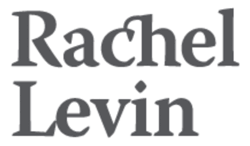
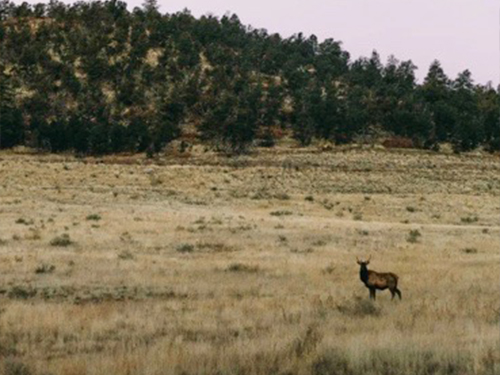
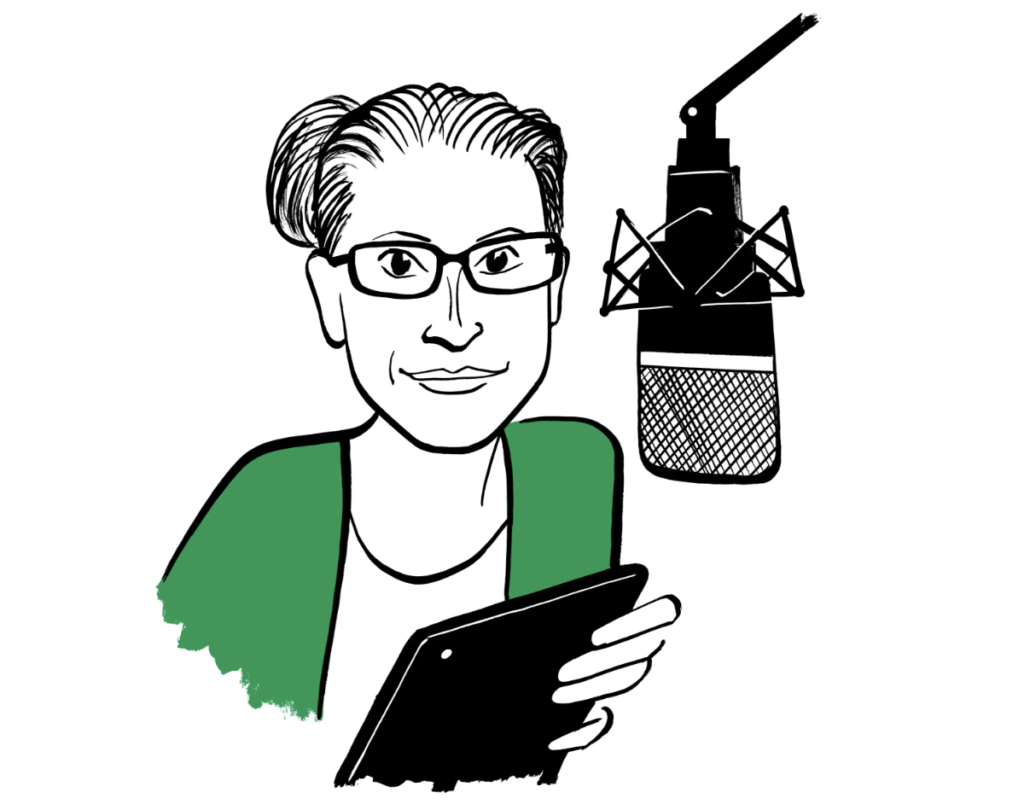
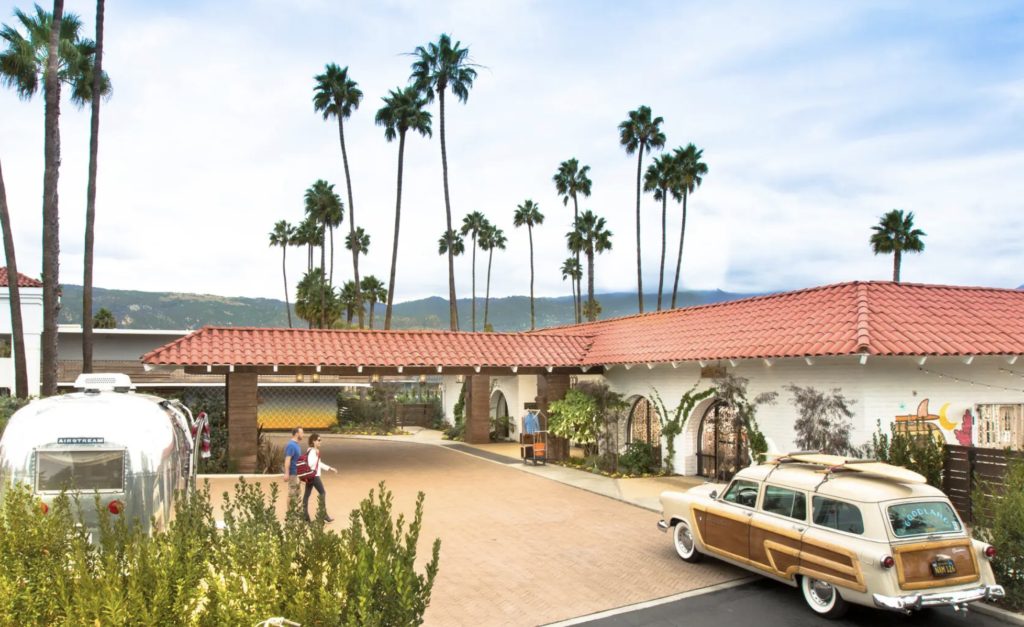
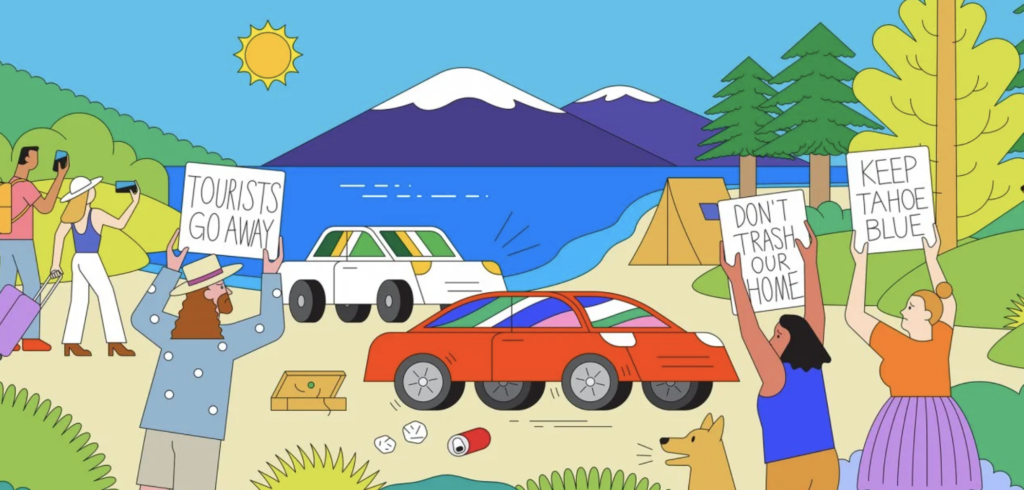
 (Photo: Tim Parsons)
(Photo: Tim Parsons)
 At a rally in Tahoe last August (Photo: Tim Parsons)
At a rally in Tahoe last August (Photo: Tim Parsons)